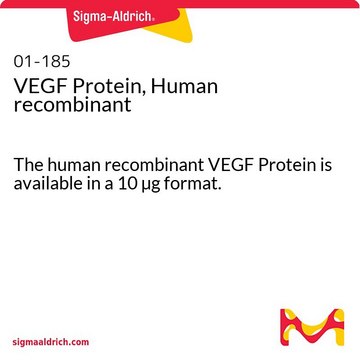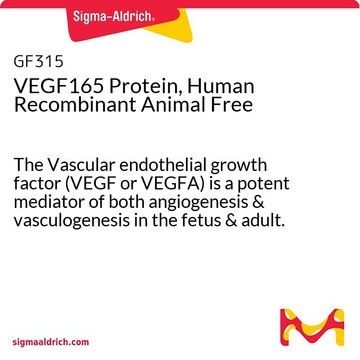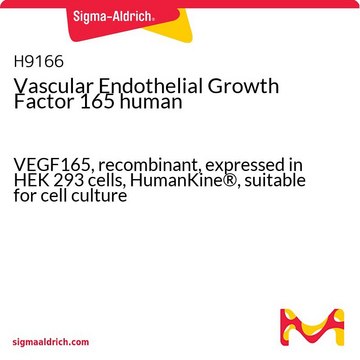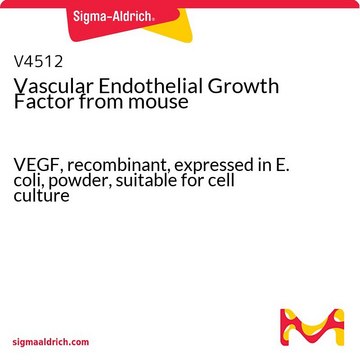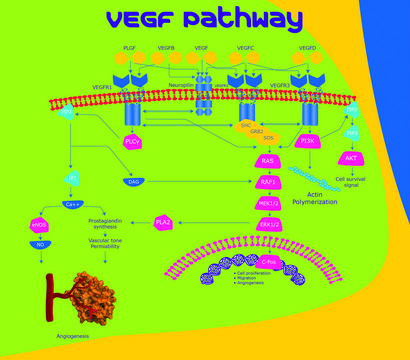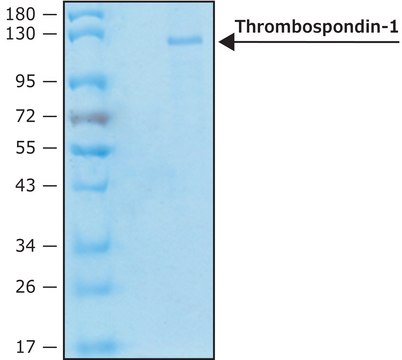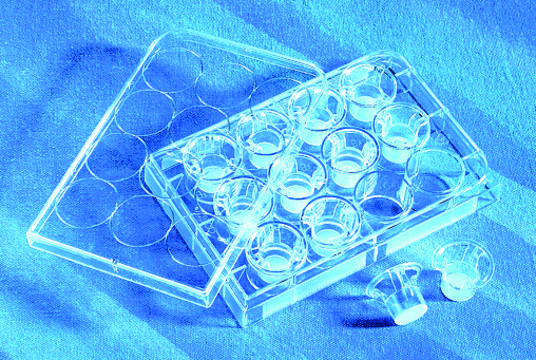SRP3182
VEGF human
Animal-component free, recombinant, expressed in E. coli, ≥98% (SDS-PAGE), ≥98% (HPLC), suitable for cell culture
Synonym(s):
Folliculostellate cell-derived growth factor, Glioma-derived endothelial cell mitogen, VPF, Vascular Endothelial Growth Factor-A
About This Item
Recommended Products
biological source
human
recombinant
expressed in E. coli
Assay
≥98% (HPLC)
≥98% (SDS-PAGE)
form
lyophilized
potency
1.0-8.0 ng/mL
mol wt
38.2 kDa
packaging
pkg of 10 μg
technique(s)
cell culture | mammalian: suitable
impurities
<0.1 EU/μg endotoxin, tested
color
white
1 of 4
This Item | SRP3183 | SRP3185 | SRP3184 |
|---|---|---|---|
| recombinant expressed in E. coli | recombinant expressed in E. coli | recombinant expressed in HEK 293 cells | recombinant expressed in HEK 293 cells |
| technique(s) cell culture | mammalian: suitable | technique(s) cell culture | mammalian: suitable | technique(s) cell culture | mammalian: suitable | technique(s) cell culture | mammalian: suitable |
| assay ≥98% (HPLC), ≥98% (SDS-PAGE) | assay ≥98% (HPLC), ≥98% (SDS-PAGE) | assay ≥95% (HPLC), ≥95% (SDS-PAGE) | assay ≥95% (HPLC), ≥95% (SDS-PAGE) |
| form lyophilized | form lyophilized | form lyophilized | form lyophilized |
| storage temp. −20°C | storage temp. −20°C | storage temp. −20°C | storage temp. −20°C |
General description
Application
Biochem/physiol Actions
Sequence
Physical form
Reconstitution
Storage Class Code
11 - Combustible Solids
WGK
WGK 3
Flash Point(F)
Not applicable
Flash Point(C)
Not applicable
Regulatory Information
Choose from one of the most recent versions:
Certificates of Analysis (COA)
Don't see the Right Version?
If you require a particular version, you can look up a specific certificate by the Lot or Batch number.
Already Own This Product?
Find documentation for the products that you have recently purchased in the Document Library.
Articles
Role of growth factors in stem cell differentiation and various growth factors for your research at sigmaaldrich.com
Protocols
Discover our collection of primary human hepatic sinusoidal endothelial cells, a protocol for thawing, plating, and growing HHSECs, and a recipe for our HHSEC maintenance media formulation.
Our team of scientists has experience in all areas of research including Life Science, Material Science, Chemical Synthesis, Chromatography, Analytical and many others.
Contact Technical Service